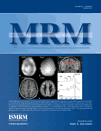MRI resolution enhancement: How useful are shifted images obtained by changing the demodulation frequency?
Abstract
Super-resolution reconstruction is a process by which a set of different low resolution images of the same object are used to create an enhanced, higher resolution image of that object. Recently there has been debate amongst researchers whether it is possible to obtain in-plane image enhancement using a set of low resolution magnetic resonance images, acquired by making small, independent changes to the demodulation frequency. We show that shifted low-resolution images contain different information that can be used to obtain denser sampling, leading to image enhancement. We conclude this from specific phantom experiments, applying signal processing sampling theory and taking into consideration the relative sampling of the point spread function with respect to the location of signal sources. Furthermore, the maximum achievable resolution for Fourier encoded MRI data at a boundary or object feature is governed by the effective width of the point spread function or the Fourier pixel size determined by the extent of k-space; this is verified experimentally. Magn Reson Med, 2011. © 2010 Wiley-Liss, Inc.




